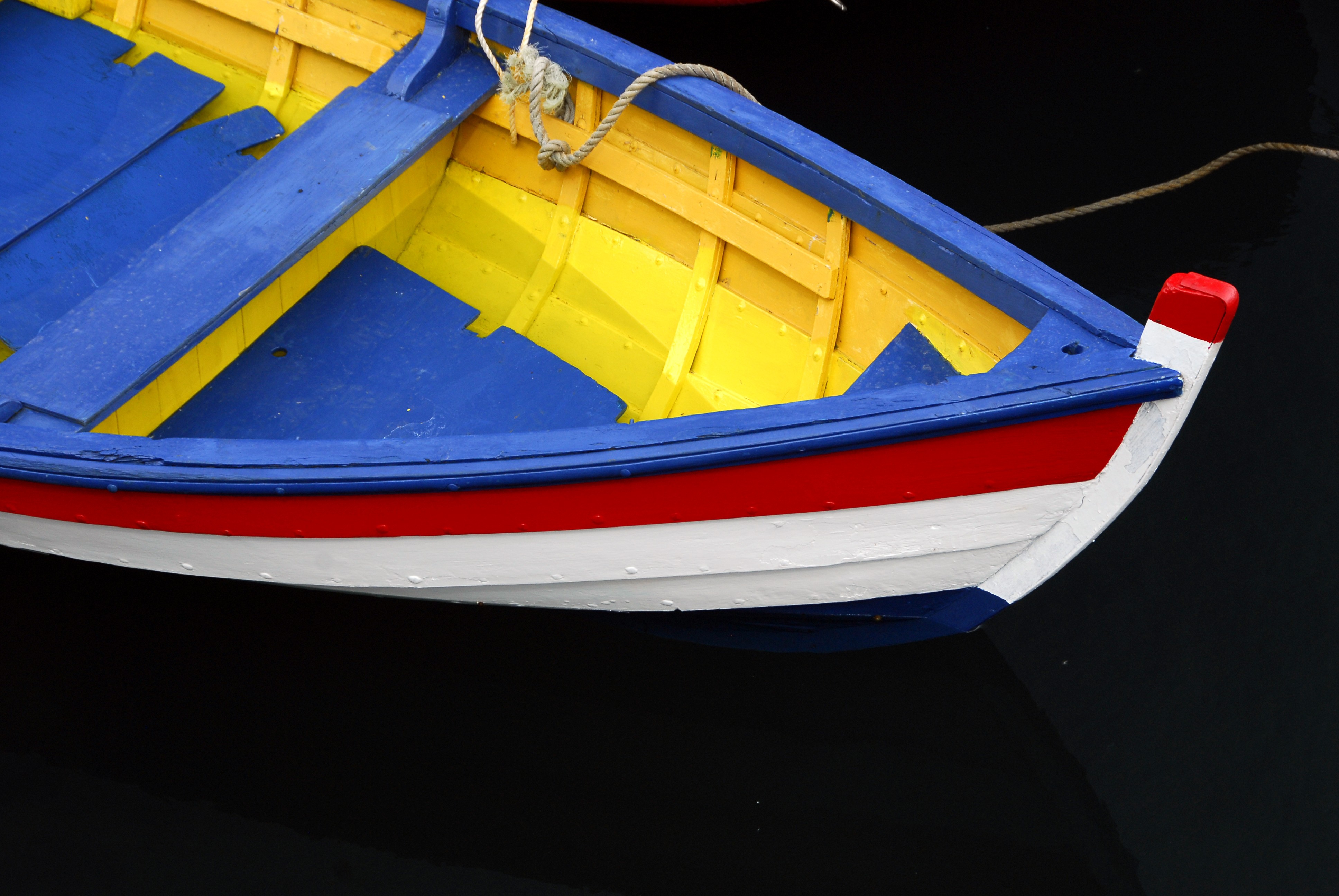Photos and Text by Steve D’Antonio
Copyright © 2016 SDMC, Inc.
From the Editor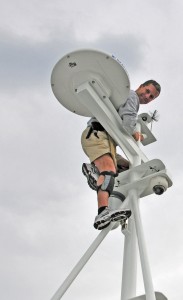
“120 Expedition Yacht Sinks Off Ft. Lauderdale”
It’s not a headline you see every day, however, it’s one that ran just last week. On the night of Monday January 25th the expedition motor yacht Serena III sank not long after departing Port Everglades.
I’m always cautious about rushing to judgement in cases like this, however, even if all the facts are never revealed, there is at least one good lesson here. Based on the first officer’s comments, the chain of events went something like this, ‘We noticed a list, the captain went below to check the bilges and reported flooding, we got the owners into the first life raft. It happened pretty quickly’.
If that’s true, high water alarms either weren’t present or they weren’t operational. It takes more than a small amount of water to cause a vessel of this displacement to list, and as such I’d expect alarms to have sounded. Because of the water depth, over 1,200 feet, the vessel is beyond salvage, which means it’s unlikely we’ll ever know exactly what occurred.
If you haven’t tested your high water alarms, and bilge pumps, do so. The most effective, real-world test involves controlled flooding of bilges, allowing rising, preferably fresh, water to set off alarms and trigger pumps (be sure to include crash or high volume, higher mounted pumps in the test). If you have hydraulic bilge pumps, these too should be tested.
A few years ago I inspected a 60+ foot vessel that was equipped with four 3700 gph electric bilge pumps. When “tested”, every pump ran and the owner reported he did this periodically. However, every pump discharge was equipped with a bronze swing check valve located adjacent to the pump, used to prevent back flooding and pump short cycling. Fortuitously, while I was aboard a fresh water hose burst, flooding one of the bilges. The electric pump in that compartment dutifully kicked in and began running, however, I noticed that while there was turbulence around the pump, the water level wasn’t dropping. I went on deck and looked at the discharge, and was surprised to see no stream of water. Upon closer inspection I determined that the weight of the water between the check valve and the overboard discharge was great enough to prevent the pump from being able to overcome it upon start up. This is an especially insidious problem in that the first time the pump was tested, with a dry hose presumably, it would work, however, once water became trapped in that hose, the pump would not be able to discharge water thereafter. And thereafter, if the pump was “tested” by simply lifting the float switch, it would indeed run, however, it would not pump water. For this and other reasons, I have strong reservations regarding check valves in bilge pump discharge plumbing. These check valves are also prone to become seized either in the open or closed position. ABYC guidelines prohibit the use of check valves in pump discharge plumbing if it is the sole means of preventing back flooding from other pumps or common manifolds. In testing I’ve done, I’ve determined that some check valve designs, the swing gate variety, can reduce water flow by as much as 60%.
This month’s Photo Essay is a bit of a departure from the usual theme, it details the unconventional re-powering (from hybrid diesel electric to conventional diesel) and refit of Retired Sailor III, a custom-built, 73-foot motor vessel, which will be at the Miami International Boat Show. I hope you find it interesting.
A new SDMC educational video page is now available, which includes topics ranging from fuel filter service and system bleeding to high output charging and exhaust systems, as well as the newest video, which explains the value of SDMC Pre-Purchase Inspections.
Photo Essay – Anatomy of an Exceptional Refit
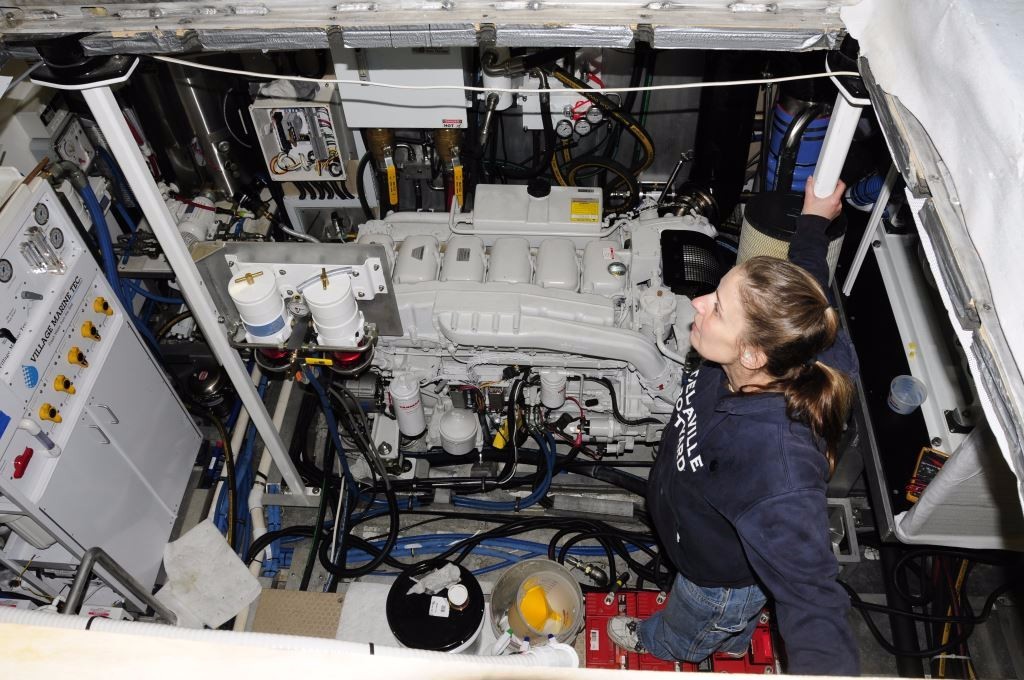
A Deltaville Boat Yard technician looks up from the “pit” what would become Retired Sailor III’s new engine room.
How and why do you repower a new, meticulously designed and exquisitely-built, custom 73-foot cruising vessel? While the (tongue in cheek) answer is easy, very carefully and with great attention to detail, the actual execution of this project represented a significant challenge for both the yard that carried out the work and me. Hold that thought.
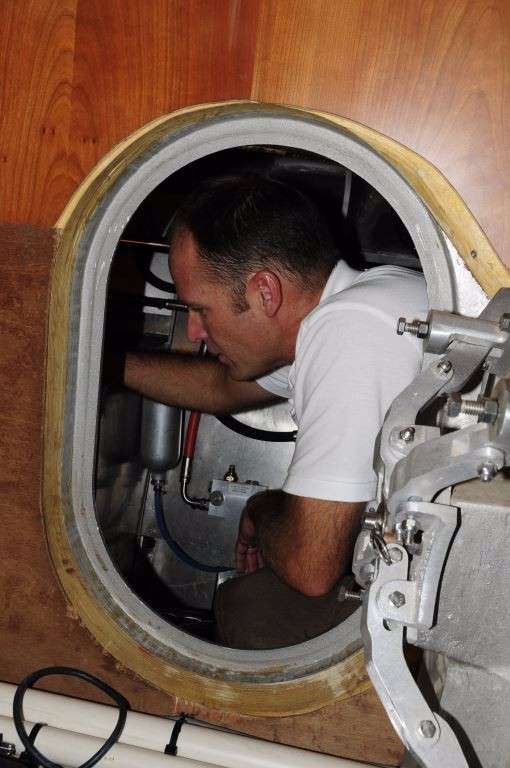
From the chain locker to the lazarette, no space went un-accessed during the refit.
In 2007 I was contacted by a client who wished to retain my services. He and his wife had recently taken delivery of their new cruising vessel. They wanted ongoing technical support, which I was able and happy to provide via my firm’s Captains’ Club program. I traveled to the vessel, which at the time was berthed near its builder in British Columbia, Canada, to carry out a preliminary inspection. While I knew it was no ordinary cruising vessel, it utilized hybrid propulsion, it was an enlightening experience. Five Mercedes-powered generators, shoe-horned into the engine room, provided power to two 700 hp, high voltage DC electric motors, with the generators designed to come on, and fall off, line as the throttle was advanced and retarded respectively. The design was ambitious and revolutionary for a yacht; however, the engine room was more reminiscent of a WWII fleet submarine than a cruising vessel. Furthermore, the complex propulsion and power generation systems were intertwined with other electrical gear throughout the vessel, including thrusters, air-conditioning and even the stove, all of which ran on high voltage DC power.

Because the original hybrid propulsion electrical system was intertwined throughout the vessel, much of it had to be removed and replaced with conventional gear.
The system, manufactured by a sub-contractor, was ahead of its time, it was installed long before hybrid propulsion was a buzz word in the automotive and marine industries, the Prius and Tesla were still on the drawing boards, if not only in the imaginations of engineers, and lithium ion batteries had yet to become a household word. Smart phones were still an exception. Not only was the system ahead of its time, regrettably it was also well ahead of the reliability curve. In spite of the propulsion system manufacturer’s best efforts and good intentions, the system had continuous bugs, some of which left the vessel dead in the water. Early on in the process I became convinced it could never be made to work reliably, and safely, and with that suggested to the owners the unthinkable, that it be removed from the vessel, and then refit with conventional propulsion, power and appliances. To their credit they took this suggestion with aplomb, quickly requesting details, which included finding a yard capable of undertaking such a complex and delicate task.
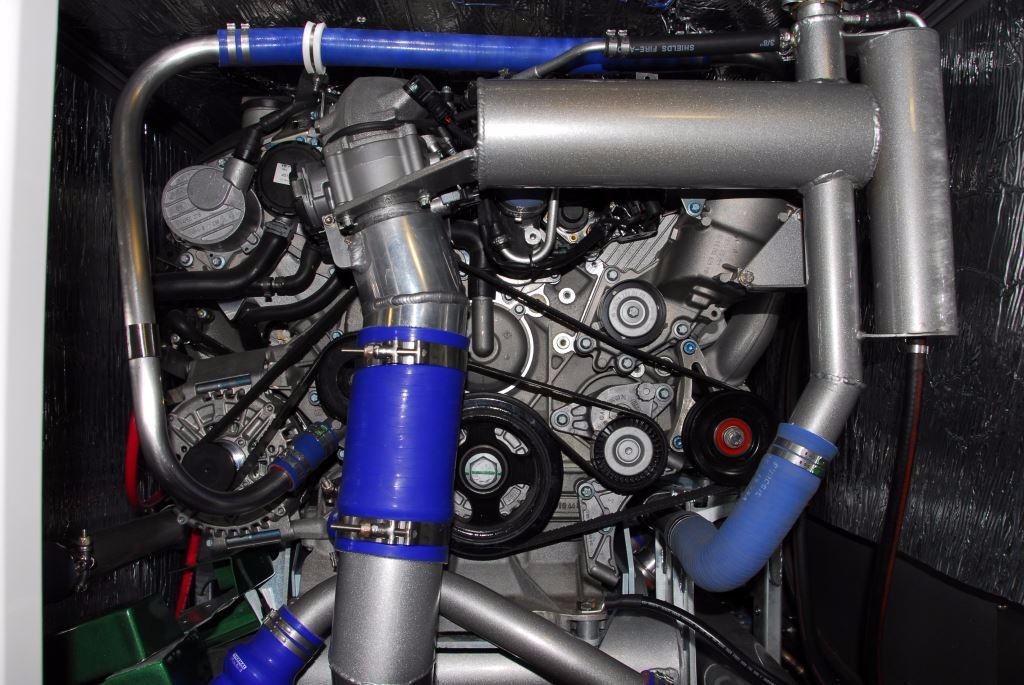
One of the five original Mercedes-based gensets that originally powered RSIII.
As mentioned above, the vessel, Retired Sailor III, RSIII for short, a Greg Marshall-designed Snowbird 73, represents some of the finest boat building quality and precision I’ve ever encountered. That’s not surprising when one considers the builder, Park Isle Marine, a very capable yard filled with skilled professionals, and the project manager, a master craftsman and boat builder, who happens to be the son of RSIII’s owners. He and his crew were intent on building the finest and safest vessel possible for his parents.
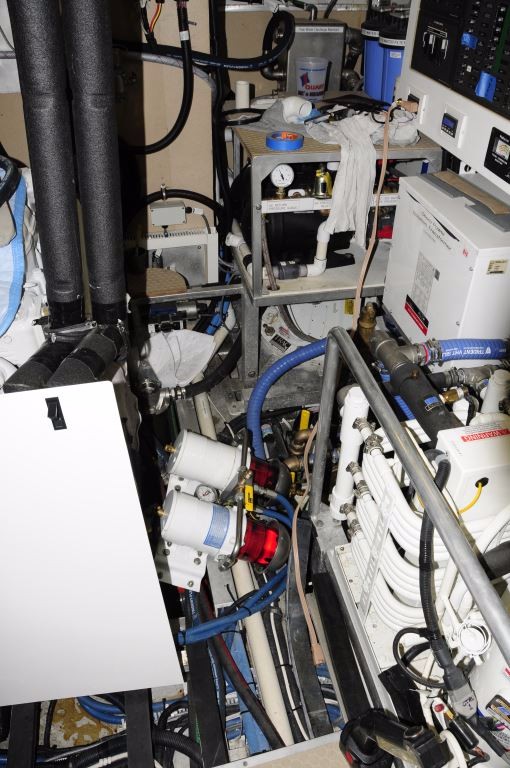
The engine room was a busy place for much of the refit, with each trade vying for space for its gear and tools.
Ultimately, RSIII was transported to Florida and then made her way up to Deltaville Boat Yard, located in Deltaville, Virginia, and just a short drive from my office. Here, over the course of the next year, the yard’s mechanics, electricians, systems specialists and carpenters would tear out RSIIIs heart, lungs and most of her other organs, replacing them with the highest quality, and most reliable conventional gear available, including Yanmar/Scania engines, Northern Lights Generators, ABT Trac hydraulics and a Paneltronics electrical distribution system. While RSIII was designed to afford access to the engine room, through a soft patch in the main saloon, removing the five generators, twin electric motors and related gear from here and the remainder of the vessel turned out to be a gargantuan task, one that was only surpassed by the design, engineering and installation involved in essentially building a new engine room and systems complement. Keith Ruse, the proprietor of Deltaville Boat Yard, managed the all-consuming project personally, while I visited the vessel on a regular basis, taking photographs and sending update reports to the owners.
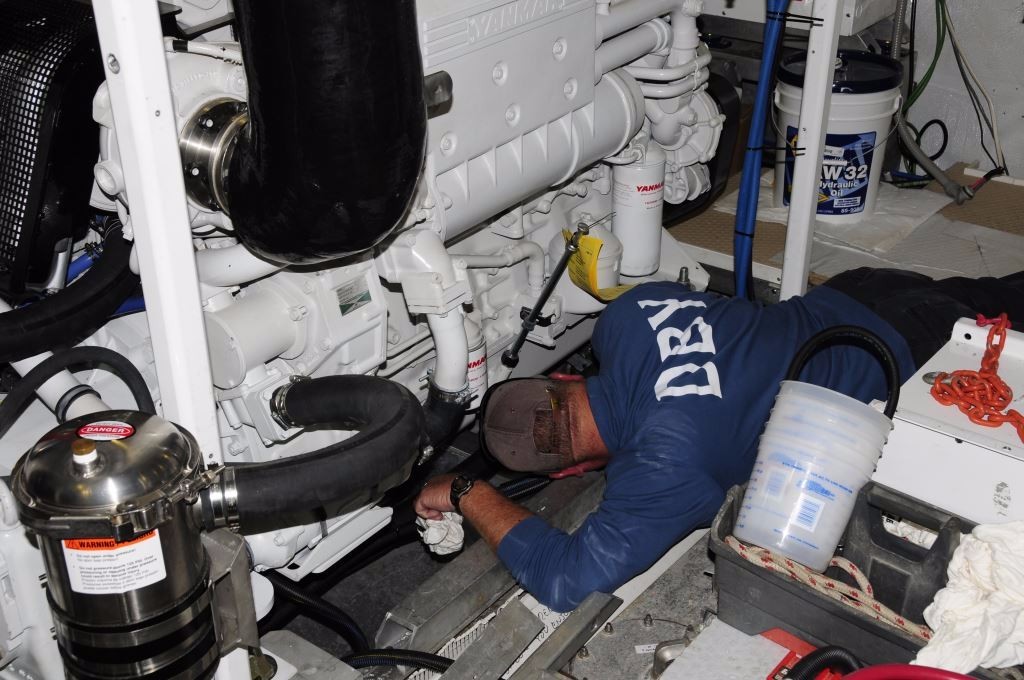
With twin in line 6-cylinder engines replacing the five gensets, each of which was enclosed in its own sound enclosure, the new engine room is considerably roomier than the previous design.
The immensity of a project of this sort, aboard an essentially new, factory fresh and otherwise flawless vessel, is difficult to describe. The results, however, aren’t, she’s near picture perfect. My criteria for measuring the success of an undertaking of this caliber is simple, I should be able to go aboard the vessel, and no matter how diligently I search, I should be unable to determine that any of her systems are anything other than builder original. The crew carrying out the work met and exceeded that standard; the quality of RSIII’s refit matched, and in some cases exceeded that of her original build, and did so under far more challenging conditions.
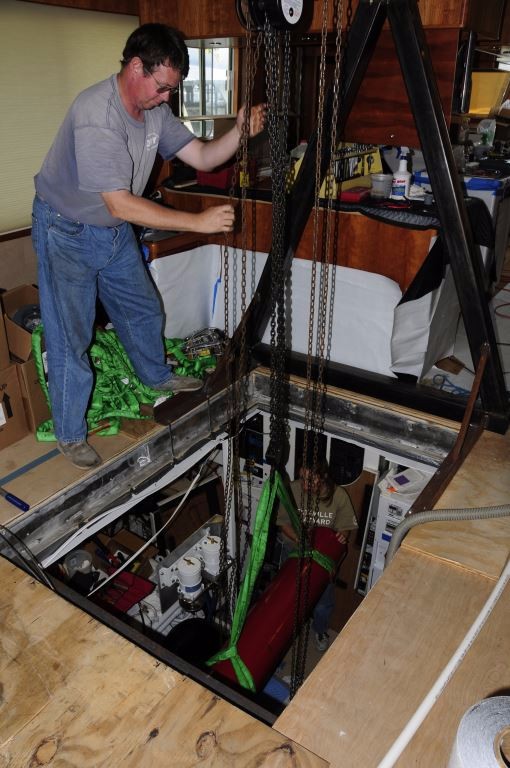
The ‘soft patch’ a removable hatch, designed by the vessel’s naval architect, proved to be a boon to those removing and replacing gear. The vessel was padded and protected, inside and out, to prevent any damage from occurring during the refit.
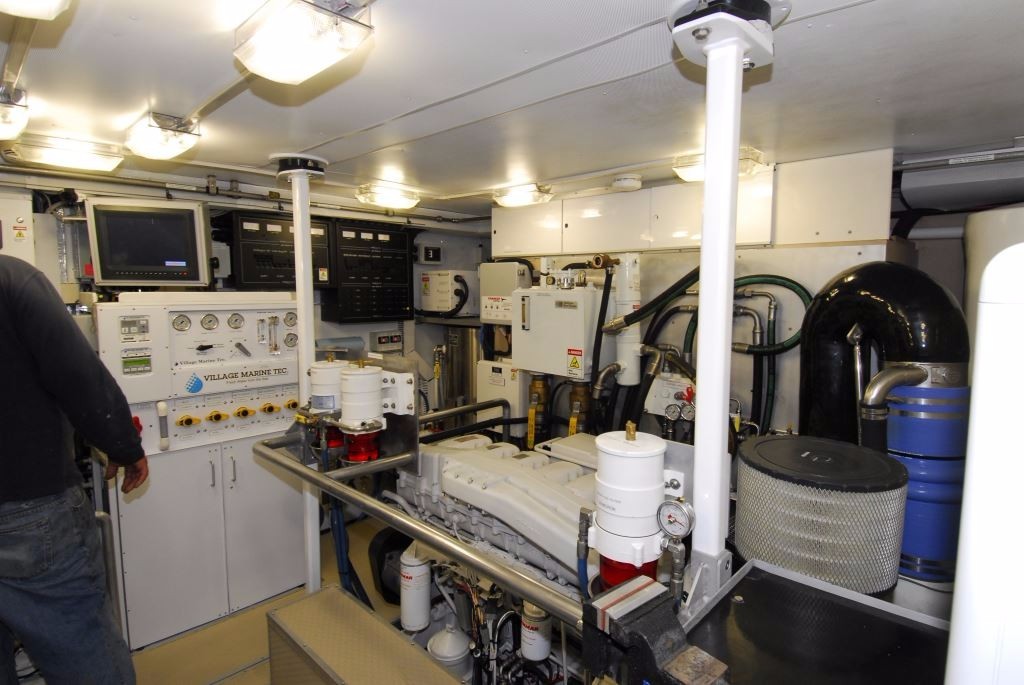
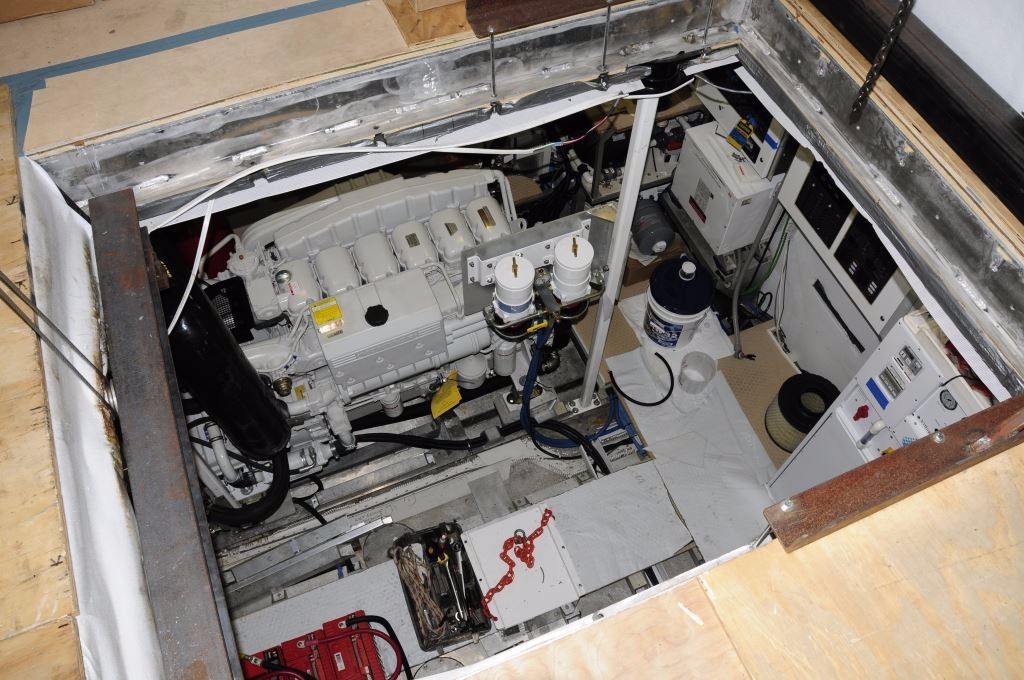
The nearly completed engine room, viewed through the soft patch access hatch.
RSIII has cruised the East Coast and Bahamas extensively since her refit was completed in 2010, returning each year to the Deltaville yard for upkeep, maintenance and the occasional modification or addition of new or updated gear and electronics. No expense has been spared on keeping her looking and working the way she did when the refit was completed.
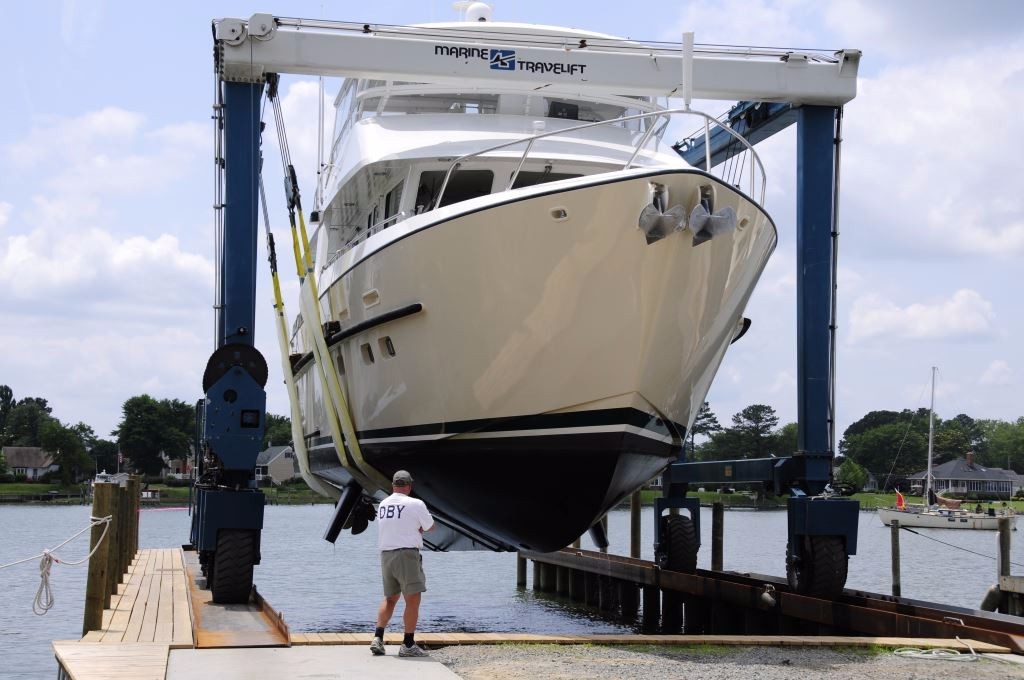
Keith Ruse, proprietor of Deltaville Boat Yard, and project manager for the refit, watches as RSIII is lowered into the water.
If you’d like to see for yourself just how she turned out, and you are planning to attend the Miami International Boat Show, you are in luck because she’ll be on display there, berthed at Collins Ave., Ramp 14, slip 616. I urge you to go aboard, look through her saloon and cabins, helm station and flybridge. Save the best for last, however, pay a visit to her exemplary engine room. I’m confident you won’t be disappointed. I’ve spent many an hour there; I’ve even used it to make instructional and training videos including https://www.youtube.com/watch?v=qM2yWQA8Sf8 and https://www.youtube.com/watch?v=XQqmtnxXMcA.

